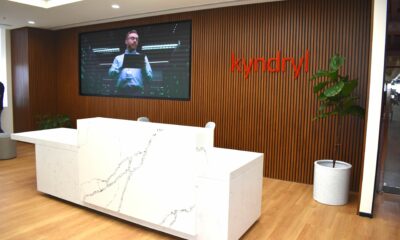News
Office leasing grows by 9% Y-o-Y in Jan-Mar’23, touches 12.6 mn. sq. ft.


April 05, 2023: CBRE South Asia Pvt. Ltd, on Wednesday announced the findings of its latest office report, ‘CBRE India Office Figures Q1 2023’. The report highlighted that office leasing activity increased by 9% Y-o-Y and touched 12.6 mn. sq. ft. during the Jan-Mar’23 period. Bangalore, Delhi-NCR and Chennai accounted for 62% of the overall transaction activity during the quarter.
Development completions of about 11.6 million sq. ft. were recorded in Jan-Mar’23, an increase of 31% Y-o-Y. Bangalore, Delhi-NCR, Pune and Hyderabad led supply addition during the quarter, accounting for a cumulative share of nearly 82%. The non-SEZ segment dominated development completions with a share of about 88%, which went up from 82% during the same period in the previous year. The report points out that nearly half of the newly completed developments during the current quarter were green-certified (LEED or IGBC), indicating a strong emphasis on sustainability.
In contrast to the previous quarters, where technology corporates dominated leasing activity, BFSI firms and flexible space operators drove space take-up in the Jan-March quarter with a share of about 22% each. This was followed by technology corporates (20%), engineering & manufacturing companies (11%) and research, consulting & analytics organizations (10%). Medium- to large-sized deal closures by global capability centres of BFSI corporates, Indian banks and domestic flex operators dominated leasing activity in the Jan-Mar’23 quarter. This indicated a divergence in office absorption trends compared to previous quarters. The cumulative share of BFSI firms and flexible space operators grew from 20% in Oct-Dec’22 to 44% during Jan-Mar’23 due to a significant increase in large-sized deal closures.
Similar to the previous quarter, domestic firms overtook American companies in terms of quarterly leasing, accounting for nearly half of the leasing activity in the Jan-Mar’23 quarter. This leasing activity was mainly led by flexible space operators, BFSI firms and technology corporates.
Small- (less than 10,000 sq. ft.) to medium-sized (10,000 – 50,000 sq. ft.) transactions drove office space take-up in Jan-Mar’23 with a share of 84% – a marginal decrease on a Q-o-Q basis. The share of large-sized deals (greater than 100,000 sq. ft.) in Jan-Mar’23 remained similar to the previous quarter at 6%. Bangalore, followed by Delhi-NCR, Hyderabad and Chennai, dominated large-sized deal closures in Jan-Mar’23, while a few such deals were also reported in Pune.


Anshuman Magazine, Chairman & CEO – India, South-East Asia, Middle East & Africa, CBRE, said, “Short-term macroeconomic pressure caused by monetary tightening, inflation, the anticipated slowdown in developed nations, and geopolitical difficulties might impact occupiers’ expansion plans and decision-making in 2023. However, the impact of these situations on the leasing decisions of multinational corporations has not yet been identified. Going forward, leasing activity could pick up, especially in the second half of 2023, as India will continue to be an attractive and affordable source of high-skilled talent which will lead to corporates looking at the country for business sustenance during this period globally.”


Ram Chandnani, Managing Director, Advisory & Transactions Services, CBRE India, said, “In line with past trends, Bangalore, Delhi-NCR and Hyderabad are expected to continue to drive absorption, while Chennai, Mumbai, Pune and Kolkata would also witness robust space take-up. Select tier-II markets would also continue to attract corporates’ attention as the next growth destinations due to improving infrastructure and the presence of a large talent pool.”
Other observations
Key Observations:
- The non-SEZ segment dominated development completions with a share of about 88%, which went up from 82% during the same period in the previous year.
- Similar to the previous quarter, domestic firms overtook American companies in terms of quarterly leasing, accounting for nearly half of the leasing activity in Jan-Mar’23. This leasing activity was mainly led by flexible space operators, BFSI firms and technology corporates.
- With sustained leasing activity and persistent demand for investment-grade assets, rental recovery continued across select micro-markets in a few cities in Jan-Mar’23.
- During the quarter, quoted rentals witnessed a Q-o-Q increase of 1-10% in E PBD, PBD, Sub CBD and CBD in Kolkata; 1-8% in MPH Road, Off CBD, CBD, OMR 1 and OMR 3 in Chennai; 1-4% in Noida-Greater Noida Expressway, Golf Course Road and Old Gurgaon in Delhi-NCR; 1-2% in PBD-W in Bangalore.
Key Themes in 2023:
- Occupiers and employees are expected to prefer office-based working for better collaboration, engagement, culture, compliance and innovation along with the continuing prevalence of hybrid working.
- Occupiers would continue to ramp up their return-to-office (RTO) plans and focus on formulating long-term hybrid working policies. The resultant rise in occupancies is likely to vary by sector / organization.
- As material and fuel cost rise moderated towards the end of 2022, construction & fit-out cost inflation is anticipated to continue to ease in 2023. In response to elevated price levels, possible strategies for occupiers could include adjusting fit-out budgets for cost escalation, requesting additional fit-out periods from landlords, renewing leases in currently occupied spaces, seeking fully fitted spaces or considering flexible space options.
- Tightening ESG regulations would require regular reporting by occupiers in the coming years. Occupiers are thus expected to continue to display a flight-to-quality wave towards premium and sustainable spaces in the medium to long term.
- The intense focus on RTO planning and hybrid working would continue to lead to an increasing significance of workplace strategies in corporate agendas. The need for productive interactions with relevant co-workers would require the right spaces, tools, services and experiences that cannot be easily recreated outside the office, for which occupiers may revisit workplace design standards.
-



 Interviews4 weeks ago
Interviews4 weeks agoHigh Rental Yield, Price Appreciation, Stable Growth, Make Sydney an Ideal Realty Investment Option: Haansal Estate
-



 News3 weeks ago
News3 weeks agoManasum Senior Living Launches IKIGAI GOA, A Senior Living Community in North Goa, in collaboration with Prescon Homes
-



 News2 weeks ago
News2 weeks agoKW Delhi 6 Mall Onboards New Brands
-



 News1 week ago
News1 week agoGodrej Properties Sells Rs 3k cr+ Homes of Godrej Zenith, Gurugram, within 3 days
-



 News3 weeks ago
News3 weeks agoBridging India Divide: Top 5 Tier- 2 Cities to Focus On
-



 News2 weeks ago
News2 weeks agoCommercial Realty Gets Tech Savvy: Fast Construction, Enhanced Convenience
-



 News3 weeks ago
News3 weeks agoMultipoint Connection – A Definite Boon
-



 News2 weeks ago
News2 weeks agoRBI’s Status Quo on Key Policy Rates to Help Maintain the Real Estate Growth Momentum, Say Industry Stalwarts

















